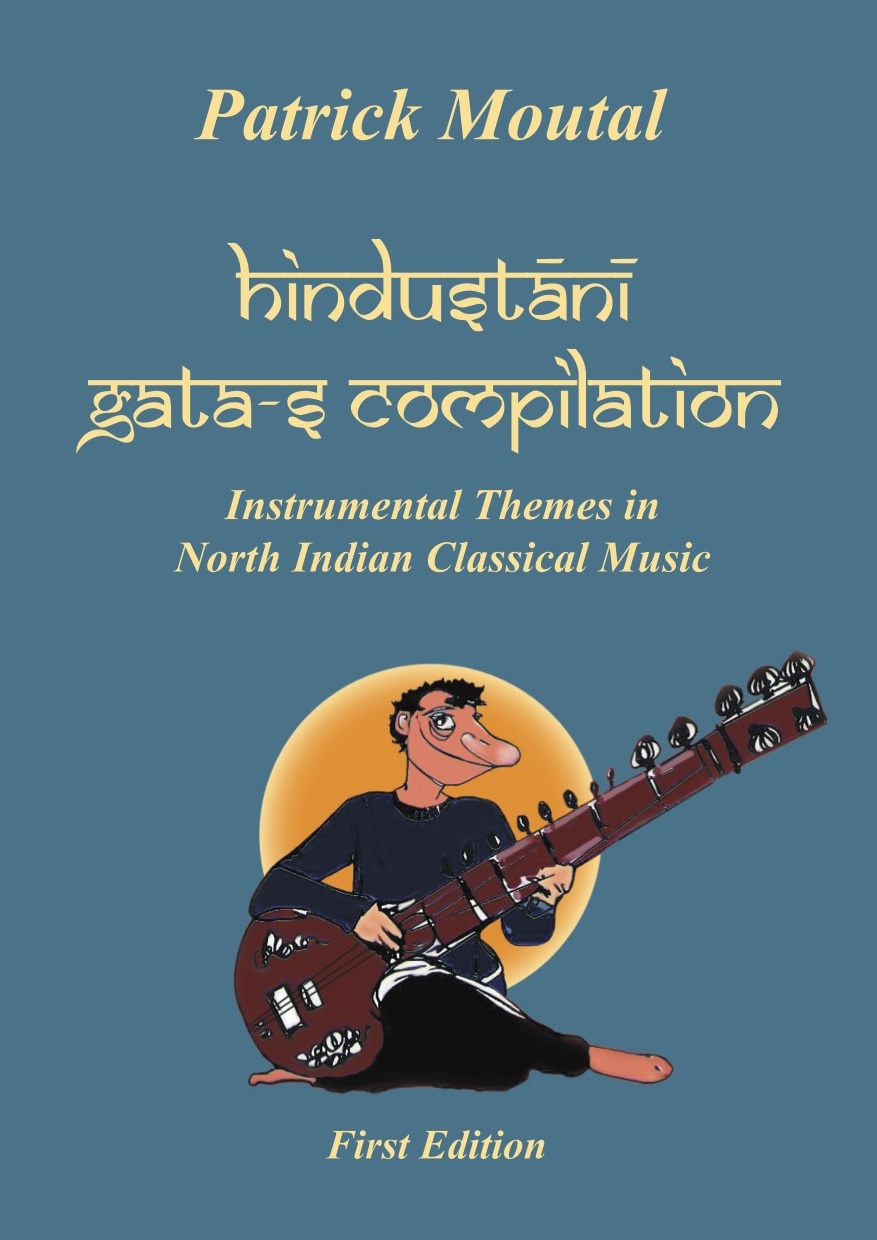 I use Pandit Vishnu Narayan Bhatkhande swarlipi (system of notation) for gat notation. I find it much more practical than Pandit Vinakak Rao Patwardhan's one.
I use Pandit Vishnu Narayan Bhatkhande swarlipi (system of notation) for gat notation. I find it much more practical than Pandit Vinakak Rao Patwardhan's one.
Non hindi speaking indian music lovers are strongly invited to learn to read and write hindi - at least notes and rhythmic meters - so that they can get access to outstanding books on rag descriptions and bandish (compositions, themes). There is nothing much in English...
J'utilise le système de notation de Pandit Vishnu Narayan Bhatkhande pour l'écriture des gat-s. Je le trouve bien plus pratique que celui de Pandit Vinayak Rao Patwardhan.
Les amateurs et praticiens de musique hindoustanie devraient faire l'effort d'apprendre à lire et écrire en hindi - tout au moins les notes et les métriques. Cela donne accès aux descriptions de rag-s et aux thèmes que l'on trouvent dans de fantastiques ouvrages. Il n'y a pas grand chose en anglais...
Register on the Site to get full access to its contents (audio and video archives) and to receive the monthly Newsletter!
|
Kafi, Vilambit Gat, Teental (कफि, विलम्बित गत, तीन्ताल) (Pandit Telang) & Madhya Laya Teental Gat |
|
Khamaj, drut gat, teental (खमाज, द्रुत गत तीन्ताल) (Dr. K. C. Gangrade) |
|
Nat Bhairav, Drut Gat, Teental (नट भैरव, द्रुत गत, तीन्ताल), Pandit Lal Mani Misra |
| Sindhura Vilambit Teental (सिंन्धुरा विलम्बित तीन्ताल), Dr. K.C. Gangrade & Drut Teental, Pandit Lal Mani Misra |




